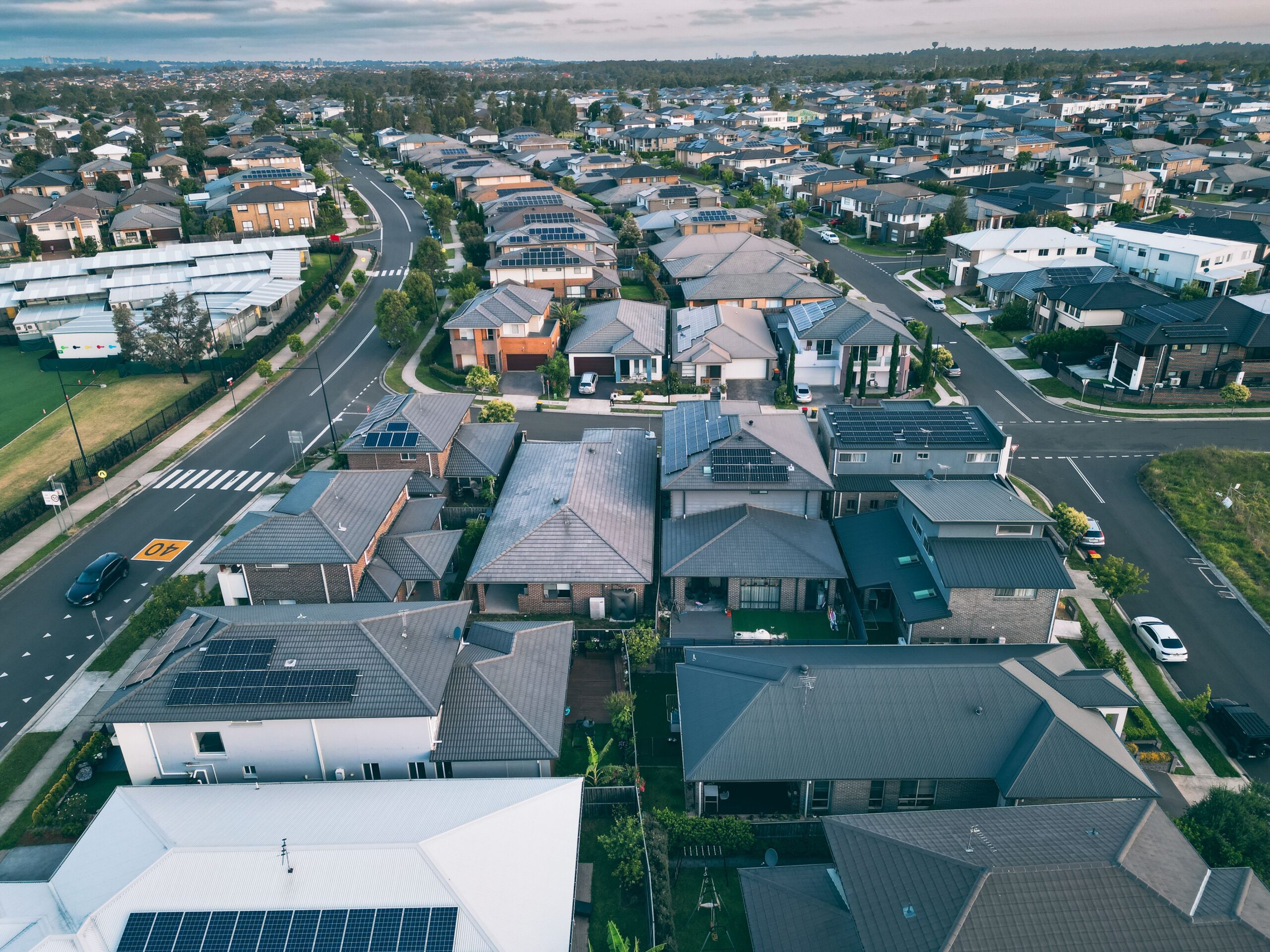Buying a House in QLD Checklist
Get a Quote
It's quick and easy to get a quote.
Simply leave us your name, phone number and what you need quoted and one of our expert conveyancing solicitors will call you straight back.


Are you ready to embark on the exciting journey of buying a house in Queensland?
Owning a home is a significant milestone, but the process can be complex and overwhelming. To ensure a smooth and stress-free experience, it’s essential to have a well-organised checklist that covers the key steps of the home-buying process.

The checklist in this article covers all the essentials. It will help you stay organised so you can make informed decisions toward this life-changing experience.
Step 1: Secure Your Financial Resources
There are a lot of steps to take before you can make an offer and move into your new house, so before you start thinking about that step, think about your budget, mortgage, and the house you want to live in.
Work out your budget
Before diving into the home-buying process, take the time to assess your overall financial position. Start by evaluating your income, savings, and monthly expenses, as well as how much you can comfortably borrow. Factor in not just the purchase price but also additional costs like stamp duty, legal fees, inspections, and moving expenses.
Next, consider your deposit. While a 20% deposit is often ideal for buying a home in Australia, government schemes and lender options may allow you to secure a loan with as little as 5–15%. Researching these options and completing any required paperwork can make this step more accessible.
Finally, be prepared for the lender’s stress test. This evaluation simulates how your finances would handle rising interest rates, ensuring you can meet future repayments comfortably. These steps not only help you understand your budget but also set you on a path to confident and secure homeownership.
Get pre-approved for a mortgage
When seeking a home loan, it’s important to understand the types of lenders available. Traditional banks often provide competitive interest rates and established services, while private lenders or non-bank financial institutions may offer more flexibility in their criteria, which can be beneficial if you don’t meet strict bank requirements. Compare interest rates, loan terms, and fees from both to determine what suits your financial situation best.

Once you’ve chosen a lender, securing a pre-approval letter is a crucial next step. A pre-approval indicates that a lender has reviewed your finances and is willing to provide you with a loan up to a specified amount. This not only demonstrates to sellers that you’re financially prepared but also strengthens your position in a competitive market by showing you’re a serious buyer.
Having a pre-approval in hand can streamline the buying process once your offer is accepted, as much of the financial vetting is already complete. However, it’s essential to understand the conditions of your pre-approval. These may include specific time limits or requirements for final approval, which ensures you’re fully informed before making commitments.
By comparing lenders and obtaining a pre-approval, you position yourself to act confidently and efficiently in the home-buying process.
Find your dream home
Once your budget is set and pre-approval secured, you’re ready to begin the search for your ideal home.
Begin by defining your needs and wants, considering factors such as location, size, number of bedrooms, and property type. Prioritise these factors realistically, aligning them with your budget.

Utilise real estate websites and apps to browse available properties so that you can explore the market. Research potential neighbourhoods and evaluate factors like school zones, public transport options, and proximity to amenities.
When attending property inspections, conduct a thorough examination of the property’s condition, layout, and potential renovation needs. You might also consider hiring a building and pest inspector for a professional assessment once you’ve decided on the property you want to buy.
Step 2: Consult a Conveyancer
Consulting a conveyancer early in the home-buying process is important. Their legal expertise ensures that property titles are clear and free of encumbrances. More importantly, they help you through any legal obligations and potential risks associated with the property purchase.
Moreover, a conveyancer will help you avoid issues like discovering unpaid council rates, hidden easements that limit how you can use the property or disputes over boundary lines. They also ensure the contract of sale doesn’t include unfair clauses that could put you at a disadvantage. By identifying these risks before you commit, a conveyancer protects your interests and helps prevent unexpected costs or legal complications.
After you get the green light from your conveyancer, you will finally be ready to make an offer.
Step 3: Make an Offer
Making a competitive offer involves careful consideration of the property’s market value and your budget. To protect your interests, consider including conditions in your contract that can help you avoid problems in the future. Some of the most common conditions include the following:
- Building and Pest Inspection Contingency: This allows you to back out of the deal or renegotiate the purchase price if significant issues are found during inspections.
- Financing Contingency: This protects you if your lender denies final loan approval, preventing you from being obligated to complete the purchase.
- Council Approval Contingency: If you plan to renovate or develop the property, this ensures that your proposed changes comply with local regulations before proceeding.

When negotiating with the seller, it is important to maintain a flexible approach and be open to discussing key aspects such as the price, settlement date, and any inclusions like appliances or fixtures. Demonstrating a willingness to compromise on non-critical terms can help foster goodwill and make the seller more receptive to your offer. This balanced approach not only increases the likelihood of reaching a mutually beneficial agreement but also sets a positive tone for the entire transaction.
Step 4: Start the Legal and Financial Process
Once your offer has been accepted, the legal and financial process begins. Staying proactive and being communicative during this stage is key to avoiding any delays that could push back your settlement date.
Review your contracts and titles with your conveyancer.
Engage a solicitor or conveyancer to review contracts and conduct thorough title searches.
Your conveyancer will handle important tasks such as explaining the terms and conditions of the contract to you, ensuring that all documentation is completed correctly, and identifying any potential issues that might affect your purchase.
They will also liaise with the seller’s legal team and coordinate with your lender to arrange for settlement, making sure that all financial obligations are met on time and that the mortgage paperwork is in order and ready for settlement.
Having a conveyancer guide you through this process helps ensure that no legal details are overlooked and you are protected from unexpected problems or expenses.
Ensure that building and pest inspections have been completed
During this process, pay special attention to unique features like pools, older structures, or other amenities like decks and extensions. These inspections provide valuable insights into the property’s condition and potential maintenance needs, helping you understand any hidden costs or repair work that might be required.

Older houses, for instance, may cost more to renovate, and you could end up paying more than you initially budgeted for. For properties with additional features, such as a garden or outdoor entertaining areas, it is equally important to evaluate their condition, as these may require extra maintenance.
Thorough inspections also help in assessing compliance with safety standards, which can be particularly critical if the property has unique attributes. Engaging a professional inspector early ensures that you can make informed decisions about whether to proceed with the purchase or negotiate repairs or a reduced price before finalising the sale.
Arrange for home insurance coverage
This step is necessary to protect your investment. This should be effective from the point the contract is signed so that you are protected as soon as possible. Home insurance not only provides peace of mind but also safeguards against unexpected events such as natural disasters, theft, or damage to your new property.
Make sure to research different insurance providers to find a policy that offers the right level of coverage for your needs, including protection for the building structure and contents. It is also beneficial to understand the specific coverage terms, exclusions, and claims process to ensure you are adequately prepared.
Finalise the mortgage application process with your lender
Your mortgage provider will need you to complete the necessary documents and prepare for the settlement. During this stage, you will also need to confirm all the loan conditions have been satisfied with your lender.
This includes providing updated financial statements, proof of insurance, and any additional information your lender might request. It is essential to maintain open communication with your lender and promptly respond to any queries to avoid delays.

Preparing for settlement involves coordinating with your solicitor or conveyancer, finalising the loan amount, and ensuring that all funds are ready for disbursement on the settlement day.
This process can be complex, so staying organised and proactive is vital to ensuring that everything proceeds smoothly. Once everything is finalised, you will receive a settlement statement outlining the final financial details before the transfer of ownership.
Pay your stamp duty
Stamp duty is a one-off fee you have to pay to transfer the ownership of a property. The cost can vary depending on the property value and the location, so it is important to budget for this expense early on.
In Queensland, stamp duty is calculated based on the dutiable value of the property. A house that costs $75,000 to $540,000 will have to pay a stamp duty rate of $1,050 plus $3.50 for each $100, or part of $100, over $75,000.
Using an online calculator, a property that costs $635,000 is estimated to have to pay a stamp duty rate of $14,425, plus a mortgage registration fee of $232 and a Land Transfer fee of $2,236, for a total of $16,893. However, there could be discounts or deferment options, especially for first-time buyers, which can ease the financial burden. For example, a first homeowner buying the same $635,000 value of a property will only need to pay for the Mortgage Registration Fee and Land Transfer Fee totalling $2,468.
Make sure you understand the requirements and application process for any concessions you may be eligible for to save thousands of dollars. If you’re unsure of any aspect of the stamp duty rates, it’s best to consult with your solicitor or conveyancer to help you navigate the paperwork. This helps ensure that all payments are made correctly and on time, preventing any unnecessary delays in the settlement process.
Step 5: Get Ready to Settle
The final step in the home-buying process is the transfer of ownership. This involves making the final payments, ensuring all legal paperwork is complete, and working closely with the seller’s representatives.
During this stage, you should also conduct a final walkthrough of the property to make sure that everything is in the agreed-upon condition. This includes checking that any agreed-upon repairs have been completed, that the property is clean, and that all fixtures and fittings are in place.

It’s also a good idea to take note of utility meter readings to avoid any discrepancies later. You will need to confirm that all financial details, including any adjustments for rates or utilities, are accurately accounted for before settlement.
Once the transfer is complete and the keys are handed over, you will officially become the owner of your new home. Congratulations!
Buying a House in QLD Checklist
There is a process to follow before buying a house in QLD. To make it easier for you to remember what you have to do next, here is a quick checklist of the home-buying process:
- Secure your financial resources
- Work out your budget
- Consider your deposit costs
- Prepare for the lender’s stress test
- Get pre-approved for a mortgage
- Shop for a lender
- Secure pre-approval letter
- Find your dream home
- Define your needs and wants
- Factor your priorities to align with your budget
- Explore the market and research potential neighbourhoods
- Attend property inspections
- Consult a conveyancer
- Make an offer
- Negotiate with the seller for a better price
- Start the legal and financial process
- Review your contracts and titles with your conveyancer
- Ensure that building and pest inspections have been completed
- Arrange for home insurance coverage
- Finalise the mortgage application process and submit all required documents
- Pay the stamp duty
- Get ready to settle your payment and sign the transfer of ownership
If you have more questions about the process of buying a home, feel free to contact us.
